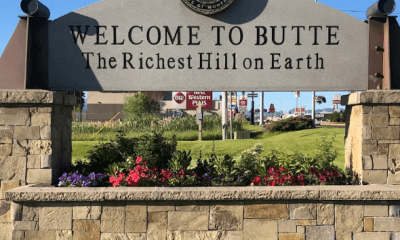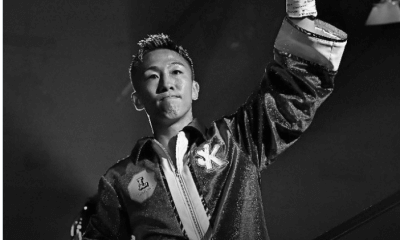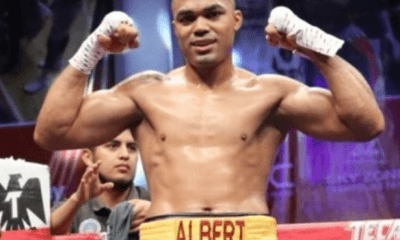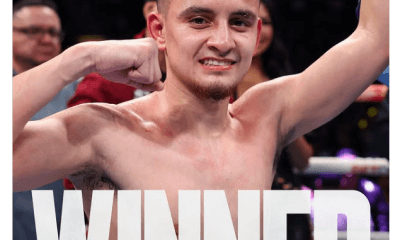Canada and USA
Southern California, the Soul of Boxing: Part 2 (How It Came to Be)
Though Southern California produced the first ever featherweight world champion when Solly “Garcia” Smith captured it in the 1890s, the sparsely populated region

Though Southern California produced the first ever featherweight world champion when Solly “Garcia” Smith captured it in the 1890s, the sparsely populated region could not compete with the East Coast in the 19th century and most of the 20th century.
It was a simple matter of numbers.
While the entire state of California had a population of 1.2 million in the 1890s, New York by comparison had 5.9 million inhabitants.
Top rated prizefighters could be found in abundance in the East Coast which dominated the American professional boxing scene for more than 100 years. From champions like Benny Leonard and Mickey Walker to Sugar Ray Leonard and Joe Frazier, the East Coast was the rock of the U.S. fight scene.
But slowly, almost invisibly, the professional boxing scene saw a shift in interest in the late 1980s and participation for the sport of boxing. The primary reason was the influx of the Latino population to the Southwest in states like Arizona, Texas, New Mexico, Nevada, and especially California.
Latinos love boxing.
Other reasons for the increase in boxing arrived in the form of two Latino fighters, one from Mexico and the other from East Los Angeles. Both of these prizefighters would prove to be consolidating forces in increasing the viewing power of boxing in the entire U.S.
Two old-timers no longer with us shared their experiences of the California boxing world before they departed.
Luis Magana was a publicist for Aileen Eaton and others and he followed in the footsteps of his father who was the first publicist for the Olympic Auditorium when it opened its doors to boxing in the late 1920s.
Magana witnessed first-hand the many heroes and villains that fought on Los Angeles fight cards. From Bert Colima, Henry Armstrong and Richie Lemos to Mando Ramos, Jerry Quarry and Bobby Chacon, the Spanish language publicist witnessed the constant stream of pugilistic contenders attempting to build world champion legacies.
Many world champions from Mexico had been imported to fight in Southern California, warriors like Rafael Herrera, Bazooka Limon, Carlos Zarate and Alfonso Zamora, but not until a fresh faced fighter from Culiacan, Sinaloa, Mexico named Julio Cesar Chavez arrived in 1983 did Magana see a fighter from Mexico develop into an international sensation. Many others had preceded Chavez but only he was able to build a following that would capture the interest of multiple generations in both Mexico and the Southwest region of the U.S.
“Oh, he was special my friend,” said Magana on one of the lunch visits we shared near his West L.A. home. “Everyone knew he was a special fighter.”
During his decades in the business Magana had seen the rise and fall of many special fighters from Mexico or those raised in California including Manuel Ortiz, Salvador Sanchez and Danny “Little Red” Lopez. Though many of them had success and became world champions, they never reached the pinnacle achieved by Chavez.
“I saw them all, Baby Arizmendi and my favorite Enrique Bolanos, and don’t forget ‘El Puas’ (Ruben Olivares),” said Magana who passed away in 2008 at age 97. “Chavez has that extra appeal.”
Then, in the early 90s, Chavez was followed by a young Mexican-American boxer, Oscar De La Hoya, who quickly ravaged the super featherweight, lightweight, and super lightweight divisions in less than three years. He was dubbed the “Golden Boy” a name that had been given first to a boxer from the 1950s named Art Aragon.
Magana introduced me to Aragon, who was a boxer both loved and hated by the boxing fans in Southern California during his heyday. Also from East L.A., the nefarious Aragon was a promoter’s dream. He sold out the Olympic Auditorium almost every time he fought. Fans arrived in droves to see him win or see him lose and lined up around the arena on 18th and Grand Ave. hours before the doors opened.
At first, Aragon was not happy that his “Golden Boy” moniker was given to De La Hoya when he began fighting professionally after winning the gold medal in the 1992 Olympics. But when the youngster began gathering world titles one after another, Aragon soon changed his tune.
“He deserves to be called the Golden Boy more than me,” said Aragon in my second visit to his bail bonds office near the present day 10 Goose Gym in Van Nuys. “He really is the Golden Boy. I wish I had his money.”
The late Benny Georgino, an old friend of Aragon and a former manager of multiple world champions, said the emergence of Chavez and especially De La Hoya sparked renewed interest in the sport of prizefighting.
For decades Georgino was involved in boxing, first as a fighter, then a trainer and finally as a manager and a promoter. During the 1970s to the 1980s he had a sandwich shop in downtown Los Angeles which became a haven for boxing lovers, journalists, and those involved in the sport. Located by the now defunct L.A. Herald-Examiner newspaper headquarters, the sandwich shop was the first stop for many before regular boxing shows at the Olympic Auditorium. He loved those fight days.
“There was nothing like it,” said Georgino of fight nights at the Olympic. “I used to have a regular seat for every fight. Everybody knew everybody in those days. Even the reporters would come by my spot. Guys like Bud Furillo and Mel Durslag would visit before the fights. It was the best time in boxing, I’ll tell you.”
After the Olympic Auditorium stopped having weekly shows and the Inglewood Forum ended their run in the late 90s, many felt boxing had finally run its course and become obsolete in the sports fans interests.
Revival
Inexplicably the center for boxing moved slightly east in Southern California. Even Georgino moved 60 miles east from Los Angeles to Riverside in the 1990s thinking that boxing had run out of steam. It merely shifted east to the Inland areas as people sought more affordable homes in areas like Pomona, Rialto and Corona.
When the Main Street Gym shut down its doors in 1984, it seemed to signal the end of L.A. as a bastion for prizefighting. But immediately other gyms opened doors to the dozens of boxers forced out of the famous downtown L.A. gym to other gyms.
“I used to train at Main Street but then when it closed I moved to the Olympic gym,” said Rudy Hernandez, a former welterweight fighter who now trains other fighters and works as a corner man too. “It was behind the Olympic Auditorium.”
The closure of the Main Street Gym seemed to force others to open up their own gyms and soon facilities opened up all over Los Angeles County.
Chavez vs De La Hoya
When De La Hoya began conquering different weight divisions and agreed to fight Chavez in 1996, the boxing world stopped to watch the showdown. It was a meeting between the Chavez generation and the new De La Hoya generation, especially among Mexican-Americans living in the Southwest.
Anytime a Chavez or De La Hoya fight was televised, Latino families throughout the Southwest would gather in one household. It was a phenomenon occurring in small towns like Delano, California and in large cities like Houston, Texas. Thousands of homes throughout the western region would gather together like a Thanksgiving dinner. Cousins, neighbors, friends and others would schedule to meet and sit around a television while setting up Mexican-style buffets. Anywhere from six to 40 people would gather each time a Chavez or De La Hoya fight appeared on television. It sparked renewed interest in the sport of boxing.
“Any time Oscar fought it was like a celebration in East L.A.,” said Rafael Oliveras, 33, who attended Garfield High the same high school as De La Hoya. “Chicanos seldom saw one of their own doing good things. The only time they talk about us on TV is as gang bangers. Oscar was like an adopted relative. Even my grandmother would watch.”
In two clashes De La Hoya defeated Chavez in the desert of Las Vegas in 1996 and 1998 and that seemed to ignite a firestorm of interest in prizefighting. Gyms quickly opened up, especially in the region known as the Inland Empire. From Pomona to Coachella youngsters both male and female saw athletes that looked just like them perform before thousands in packed arenas and in front of millions on television. It captured the fancy of a whole new generation.
Boxing parties still regularly occur, especially among Latino families.
“It’s a fact that Hispanic people get together to watch a big fight,” said Bob Arum of Top Rank, whose company promoted De La Hoya during a majority of his successful run. “The number of people watching a fight is even greater than what is actually tabulated. It’s always a group of people.”
All those infants who watched Chavez and De La Hoya soon grew of age and many hit the local gyms now popping up in Latino neighborhoods. But it wasn’t only relegated to Latinos.
“When that kid Oscar De La Hoya came along everyone wanted to box. They all thought they could be the next De La Hoya,” said Georgino, who passed away in February 2016. “He’s the reason so many kids are going to gyms now. I’ve never seen anything like it before.”
Georgino lived in Riverside from the 1990s until his death. When he first arrived he said there were two boxing gyms in Riverside. Today, more than a dozen exist including the Robert Garcia Boxing Academy where WBC lightweight titlist Mikey Garcia trains.
From the 1990s to 2010 the Inland Empire saw its population grow from 2.5 million to 4.2 million in 20 years. More than half of that population boom was comprised of Latinos. Most Latinos love boxing. A million dollar survey contracted by the LA Times in the1990s confirmed that fact. Most Latinos favor either soccer or baseball, but boxing is always their next choice.
“The kids see someone like De La Hoya and all the millions he has in his bank account and ask why can’t I do that too,” said Georgino. “Mexican kids are not big and not tall enough to play basketball or football, but they can fight.”
With the population explosion in the Inland Empire, a tidal wave of boxing interest soon followed.
Next on part 3: L.A.’s coming out party, Klitschkos, newspaper failures and renaissance.
Check out more boxing news on video at The Boxing Channel.
-

 Featured Articles3 weeks ago
Featured Articles3 weeks agoThe Hauser Report: Zayas-Garcia, Pacquiao, Usyk, and the NYSAC
-

 Featured Articles2 weeks ago
Featured Articles2 weeks agoOscar Duarte and Regis Prograis Prevail on an Action-Packed Fight Card in Chicago
-

 Featured Articles1 week ago
Featured Articles1 week agoThe Hauser Report: Cinematic and Literary Notes
-

 Book Review4 days ago
Book Review4 days agoMark Kriegel’s New Book About Mike Tyson is a Must-Read
-
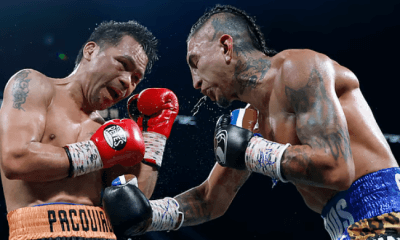
 Featured Articles4 weeks ago
Featured Articles4 weeks agoManny Pacquiao and Mario Barrios Fight to a Draw; Fundora stops Tim Tszyu
-
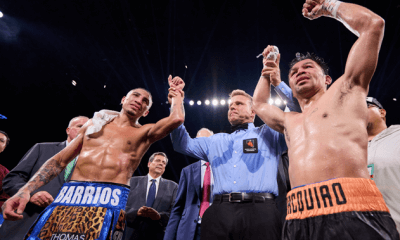
 Featured Articles4 weeks ago
Featured Articles4 weeks agoArne’s Almanac: Pacquiao-Barrios Redux
-

 Featured Articles3 weeks ago
Featured Articles3 weeks agoRemembering Dwight Muhammad Qawi (1953-2025) and his Triumphant Return to Prison
-
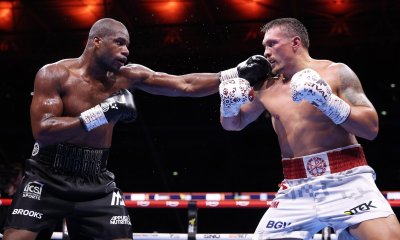
 Featured Articles4 weeks ago
Featured Articles4 weeks agoOleksandr Usyk Continues to Amaze; KOs Daniel Dubois in 5 One-Sided Rounds




